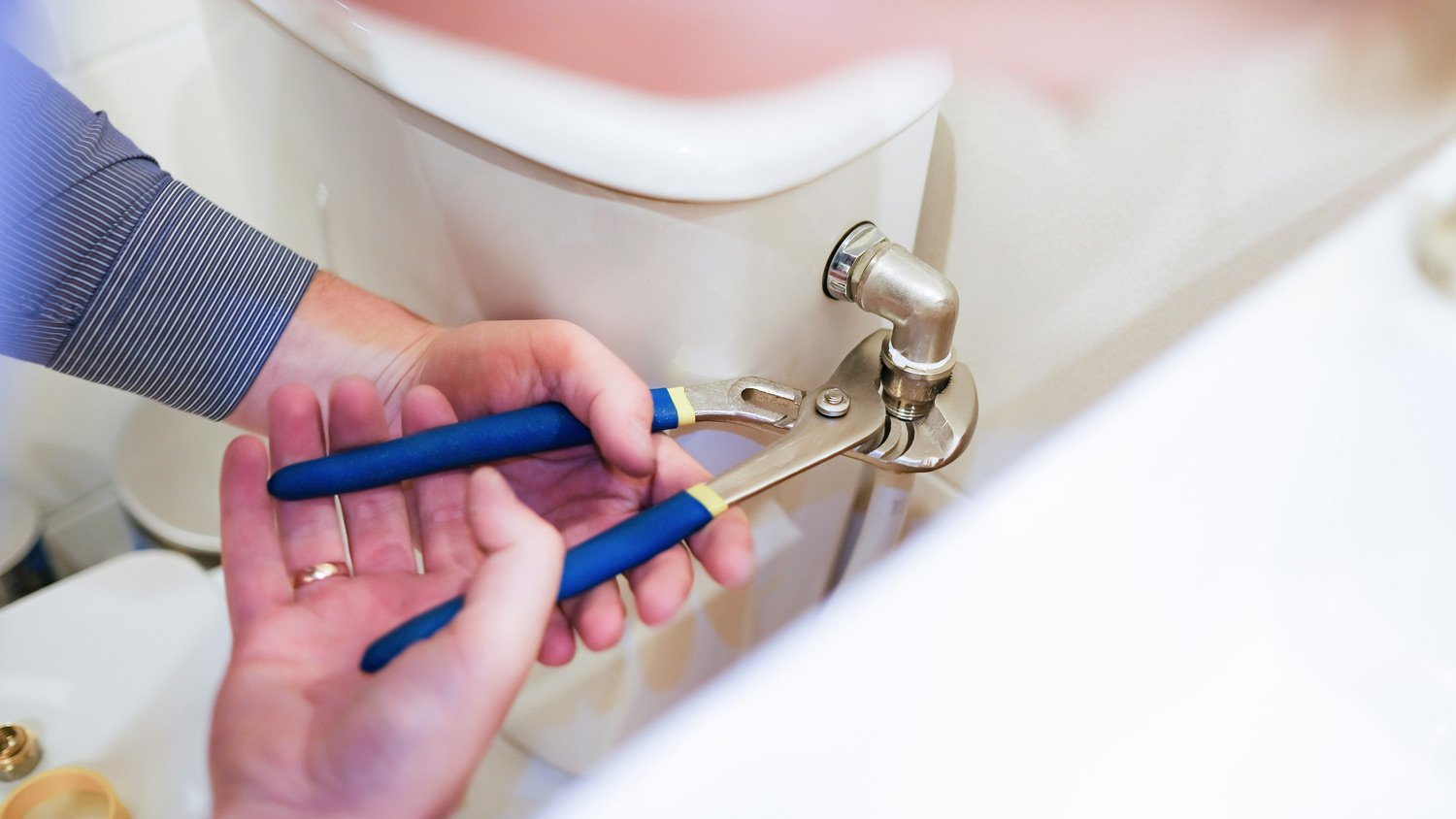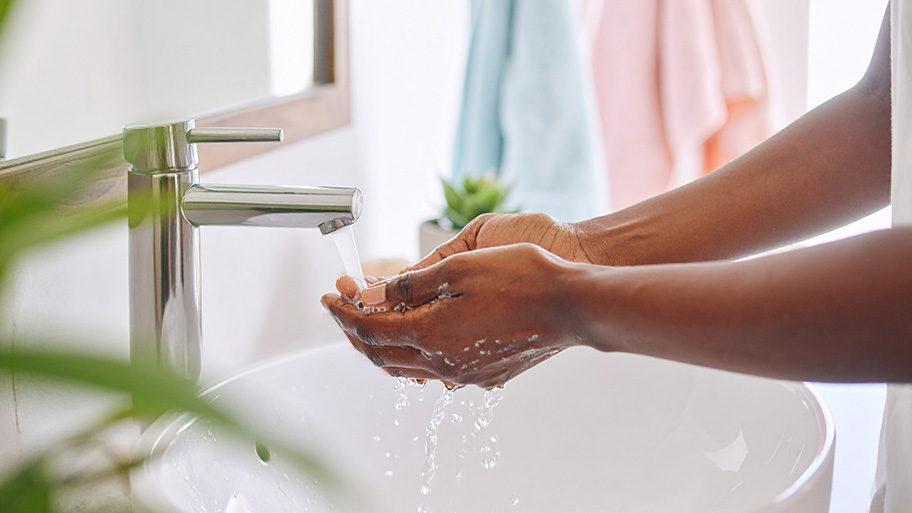
The average cost to replace a bathroom faucet typically ranges from $170 to $360. Faucet installation costs often vary based on the selected fixture hardware.
Because you can only pull out the plunger so many times


Use less toilet paper to help prevent toilets from clogging.
Hire a pro if you have a clogged sewer line.
The average cost to repair a toilet is between $150 and $390.
Backed-up toilets are an unpleasant, potentially embarrassing, and surprisingly common occurrence. Plunging a toilet may seem like a quick (if unappealing) fix, but repeated clogs can cause bigger problems that can be costly to resolve. Find out the possible reasons why your toilet keeps clogging and how to stop it from happening in the future.
One of the most common reasons for a blockage is flushing things down the toilet that you really shouldn't. All that should go into your toilet is waste and toilet paper. However, many people flush things like sanitary products, diapers, paper towels, Q-tips, and dental floss. Flushable wipes might even be a clogging culprit.
Kids especially might be flushing the wrong items down the toilet. Toys, toothbrushes, and other large items can sometimes block your toilet without you even being aware.
The easiest way to fix this issue is to instruct all members of the household to only flush toilet paper. Keep a trash can in the bathroom so people can easily dispose of things like Q-tips and dental floss. If something larger, like a toy, gets flushed, you can try to reach into the toilet trap and pull it out. But depending on how far into the system it is, you may need to call a plumber to retrieve it and unclog the toilet.
Are you guilty of pulling a long line of toilet paper off the roll every time you visit the bathroom? While toilet paper should break down, it may not dissolve as effectively when you use too much, leading to clogs. Thick-ply and poor-quality paper are also more likely to cause blockages.
Tip: Using a solution of baking soda and vinegar to unclog the toilet can dissolve the toilet paper enough to unclog your toilet.
This is another fairly easy fix. Reducing the amount of paper you use, trying a different brand, or even using a bidet can all help. You may have to check the bathroom periodically if you have kids to make sure they’re flushing regularly as well.
In the 1990s, manufacturers introduced low-flow toilets in a bid to conserve water. However, they don’t always have the flushing pressure capacity to push the materials through the trap and drain.
Although reducing the amount of paper you use can help, fixing this issue for good will take a little more effort. Clogs may be inevitable until you install a modern replacement with increased pressure.
An S-shape trap found between the toilet bowl and the drain line catches objects and prevents them from causing a more serious blockage further along the drainage system.
Items can become clogged in this section easily, and oftentimes, plunging only dislodges the trapped items rather than removing them. This can result in a bigger problem further down the drainpipe. Also, the longer they sit there, the more likely it is that other things will become attached.
If you suspect that a clogged toilet trap is the reason your toilet keeps clogging, it’s best to use a toilet auger to catch and lift the offending items out or call a local plumbing pro for assistance.
Toilet vents bring air into the plumbing system, creating greater pressure for flushing and prevents a vacuum from forming. Because the vents have an opening on a home’s roof, debris can become trapped in them, reducing flushing pressure.
To prevent this from happening, it’s a good idea to check and clean the vents regularly. But, if you’re hosing down a toilet vent and the water is coming back up the pipe, with gurgling sounds are coming from the toilet, there may be a larger blockage that needs clearing with a long auger. You may be able to do this yourself if you’re comfortable climbing onto the roof safely, but it’s better to call a pro to safely and effectively do it for you.
When items flushed down your toilet make it to your main sewer line, sometimes they get stuck there. It’s a particular problem if tree roots have infiltrated the drainage system or the pipe has broken or is corroding. Usually, when this happens, it won’t just be your toilet that ends up backing up.
A clogged sewer line will affect drainage throughout your home, and unfortunately, it’s not a fix you can DIY. Hiring a local sewer line pro is the best course of action to prevent further damage.

If the water supply line valve is not fully open, not enough water will be in the bowl for effective flushing. The fill valve, found in the toilet water tank, can also cause problems. If you adjust this too low, it can lead to weak flushing capability. Sometimes the fill valve can also become clogged with hard water scale or debris.
Make sure the fill valve is open, so the water can flow freely into the tank and then create enough flushing power to whisk away waste. You can also adjust the height of the fill valve and clean the mechanism to help produce a more powerful flush.
When you live in a region with hard water, especially from a well, the mineral buildup this causes inside the drainpipe or toilet trap can lead to more frequent clogs.
You can periodically do a flush with hot water to help to dissolve any gathering deposits of minerals like calcium.
The shape of your toilet can play a part in the likelihood of clogs. Things like narrow drain openings or oddly angled bowls can affect flush effectiveness.
The only real fix for this issue is to purchase a new toilet with a better design. If you're unsure where to start when buying a new toilet, look for one with a high MaP score. This independent agency tests toilets and rates them with a score representing the number of grams of solid waste a toilet removes from the fixture in a single flush.
Certain medications, medical issues, and diets low in fiber can lead to constipation and large, solid bowel movements. These can play their part in toilet blockages, especially if your toilet's flushing pressure is not particularly powerful.
If this is a frequent problem, a pressure-assisted toilet could be a worthwhile investment. They push extra water into the bowl with every flush and, consequently, clogs are less likely. You can also work more fiber into your diet and drink more water to help make bowel movements more comfortable and more flushable.
You can easily break up some toilet clogs with a plunger and remove tougher clogs with a toilet auger. But for a toilet that clogs frequently, there may be other issues at play. A low-flow toilet, low water pressure, a clogged toilet vent, and hard water are issues that may require a new toilet or intervention from a pro. You can hire a plumbing pro to help with big clogs or install a new toilet if you decide to go that route. The average cost to repair a toilet is between $150 and $390.
If your toilet clogs frequently or easily, there are a few things you can do to prevent it from happening again.
Use less toilet paper.
Make sure to only send flushable items into the toilet.
Replace your low-flow or poorly designed toilet.
Adjust the water fill valve.
Keep your digestive system in tip-top shape.
From average costs to expert advice, get all the answers you need to get your job done.

The average cost to replace a bathroom faucet typically ranges from $170 to $360. Faucet installation costs often vary based on the selected fixture hardware.

Wondering how much it costs to reroute plumbing? We have the information you need to learn about plumbing vent pipes and cost considerations when installing them.

We’ll cover the cost of replacing a shower or bathtub drain, whether you can tackle this repair yourself, and what other projects to consider along the way.

We’ll show you how to keep pipes from freezing in the winter and how to thaw yours before they burst.

Plumbing a bathroom starts with knowing the steps for a successful DIY project. Follow this guide to learn how to plumb a bathroom yourself.

Installing a new kitchen sink involves removing the old sink and putting in the new one. Follow these steps to learn how to install a kitchen sink like a pro.